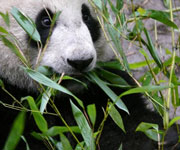Manas Wildlife Sanctuary Assam
Manas takes its name from the Goddess Manasa. The Manas Wildlife Sanctuary is noted for its spectacular scenery, with a variety of habitat types that support a diverse fauna, making it the richest of all Indian wildlife areas. The park represents the core of an extensive tiger reserve that protects an important migratory wildlife resource along the West Bengal to Arunachal Pradesh and Bhutan borders. Its wetlands are of international importance. It is also the single most important site for the survival of pygmy hog, hispid hare and golden langur.

Continent: Asia
Country: India
Category: Natural
Criterion: (VII)(IX) (X)
Date of Inscription: 1985
Manas Reserve Forest
The park, which includes part of Manas Reserve Forest and all of North Kamrup Reserve Forest, constitutes the core of Manas Tiger Reserve located in the forest divisions of Kachugaon, Haltugaon, Western Assam Wildlife and North Kamrup. Lying in the foothills of the Outer Himalaya, the area is low-lying and flat. The Manas River flows through the western portion of the park, where it splits into three separate rivers, and joins the Brahmaputra some 64 km further south. These and other rivers running through the tiger reserve carry an enormous amount of silt and rock debris from the foothills, resulting from the heavy rainfall, fragile nature of the rock and steep-gradients of the catchments.
This leads to the formation of alluvial terraces, comprising deep layers of deposited rock and detritus overlain with sand and soil of varying depth, shifting river channels and swamps. The area of the Boki basin, in the west of the park, is sometimes inundated during the monsoon. The three main types of vegetation are: tropical semi-evergreen forests in the northern part of the park; tropical moist and dry deciduous forests (the most common type); and extensive alluvial grasslands in the western part of the park.



